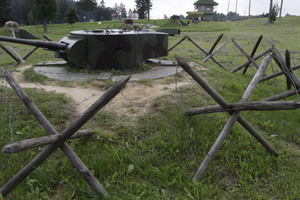
Not far from the capital city of Belarus is one of the most grandiose defense museums in Eastern Europe, the Stalin Line Historical and Cultural Complex, named after the original Stalin Line, a network of fortifications along the Western border of the former Soviet Union. The fortified line was built in the 1920s to protect against attacks from the West. But when an attack from the West did come two decades later, the line provided little defense.
The Stalin Line was an impressive line of concrete bunkers and weapons emplacements, aka pillboxes, that stretched from the Karelian Isthmus near Finland to the shores of the Black Sea. However it was abandoned by 1940 in favor of a newer line being built further West at the frontier of the expanding USSR. When Germany invaded in 1941, the new line was not yet finished, and the old line was in disrepair, leaving the Soviet Union vulnerable.
Today, what remains of this historical system can be found in various places across Russia, Belarus and Ukraine. To commemorate the 60 year anniversary of Great Patriotic War (World War II), a collection of military paraphernalia was amassed in the area of the line near Minsk. The museum complex includes a collection of trenches, roadblocks, bunkers, dots and other fortifications, and all kinds of technology like radar systems, boats, helicopters, war planes, tanks and weapons. Visitors who are keen on racing around in a war machine can even try out some of this equipment. But one exhibit stands as a reminder of the horrors of warfare: Called "Bombed House," it is a replica of what an ordinary house would look like after being bombed in war.